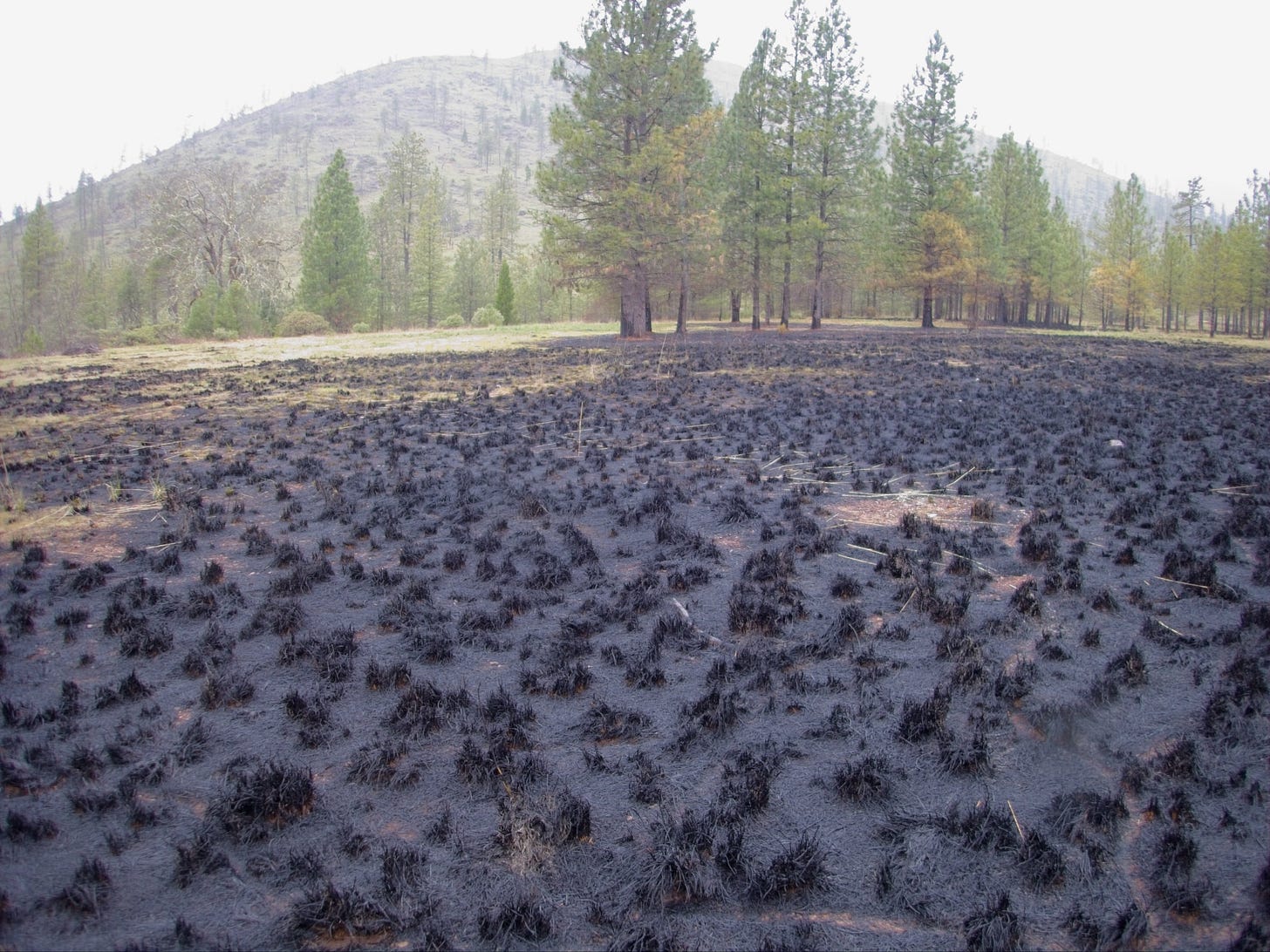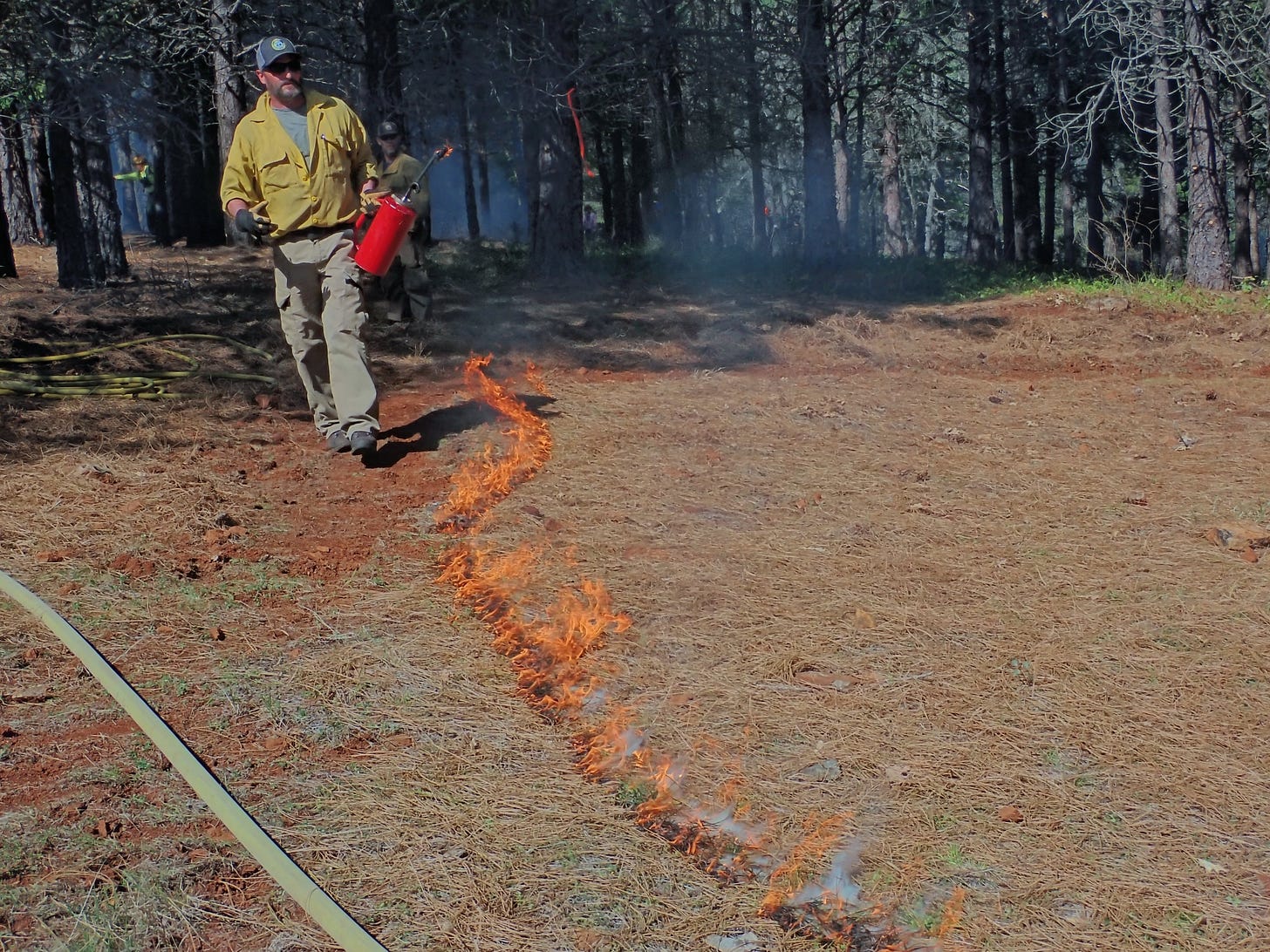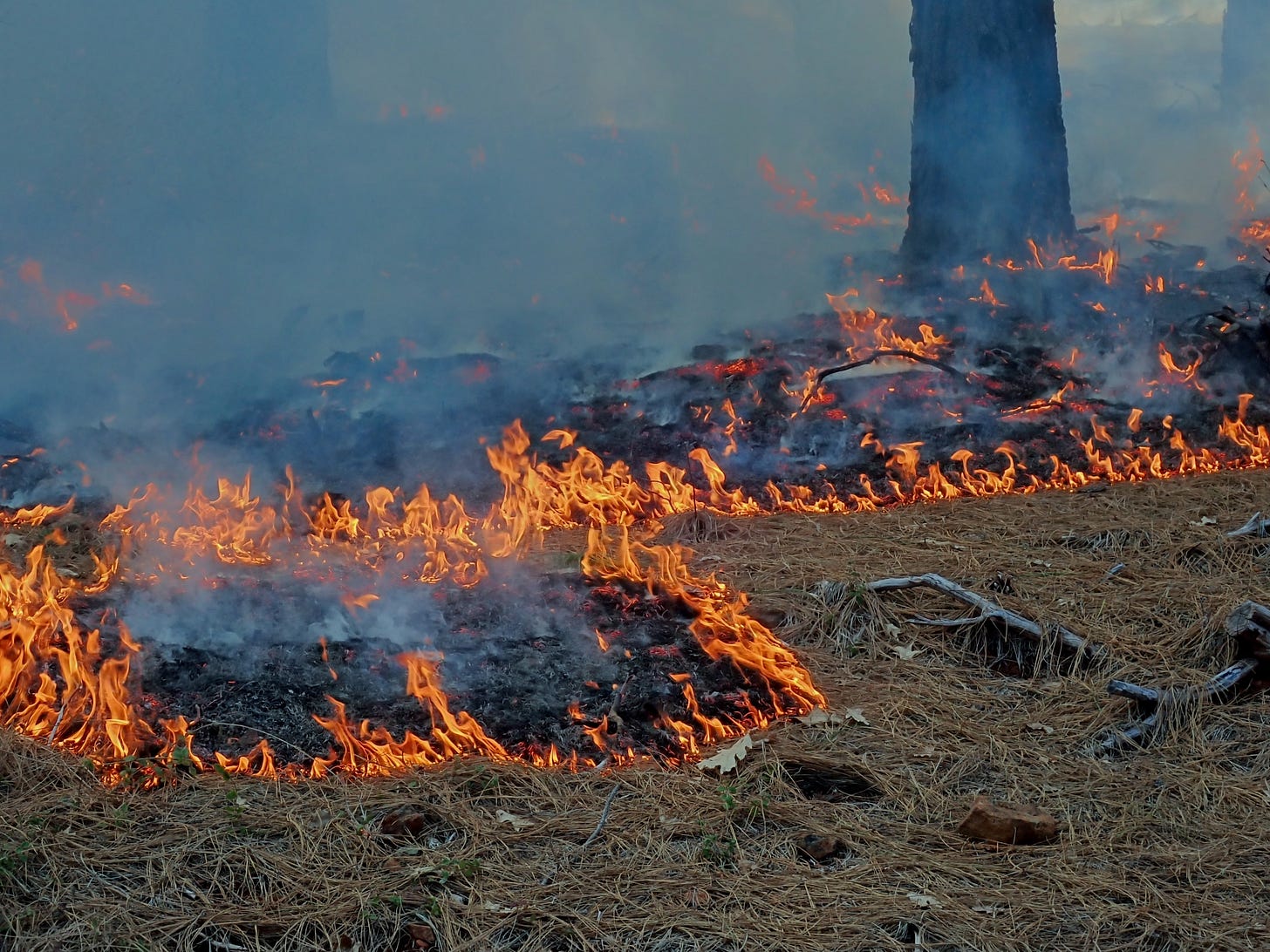There’s a new movement afoot to confront the global carbon debt crisis and restore soil carbon and ecological functioning to forests, farms and fields. One of the fastest-growing initiatives here in the US West is the rise of local Prescribed Burn Associations - PBAs. I just got back from IGNITE - a fantastic PBA training weekend sponsored by Oregon State University Extension Service, the Oregon Department of Forestry, the Watershed Center and the Rogue Valley Prescribed Burn Association. The event took place at the Siskiyou Field Institute, an organization I helped start 25 years ago, so it was a satisfying experience all around.
PBAs are a group of volunteers who include professional firefighters, landowners, youth groups, ecologists and tribes. Prescribed fire practices are increasingly linked to the indigenous cultural burning that shaped the land here for generations. Native peoples had highly specific burning techniques for tending the land as a wild garden that produced food, fiber, and tools to meet all their needs.
There are many reasons to burn land in a controlled way. The most immediate concern for those of us who live in fire country is to reverse the damage of a century of industrial logging and fire suppression. Here in Southwest Oregon, the natural fire return interval in our fire-adapted forests is around ten years. In this climate we have abundant rain in winter with little to no rain during the long hot summers. Late summer thunderstorms regularly touch off wildfires in the mountains and the vegetation burns. In the past, the fires cleared out the understory on a regular basis, so while fire was frequent, it was also less severe than the megafires we see today.
Restoring the resilience of our forests to wildfire, drought, and disease is a top priority for many of us. Without healthy forests, we won’t survive. Trees bring water and life to our world. One of the participants this weekend was a young woman from Chico, CA - home of my alma mater, Chico State University. A succession of megafires in the last seven years has practically obliterated the abundant forests I remember from my student days. We shed some tears together when she looked around at our site at the Siskiyou Field Institute and said, “at least you still have some trees left here.”
We are doing what we can to save what we have and set the stage for regeneration of what once was here. Returning good fire to the land is key. Fighting fire with fire, we begin the process of restoration by thinning forests choked with small trees and brush. Grasslands also need burning and we were able to burn a couple of acres of native bunchgrass as part of the burn practice last weekend.

Prescribed burning puts biochar on the ground. You might think that frequent fires would burn up the char left by the last fire, but that is not the case because biochar holds moisture and is not easy to ignite. More frequent, less severe fires accumulate char, building soil carbon and recycling nutrients for healthier ecosystems.
I learned a lot at IGNITE. I learned that Native American burning practices are a living tradition that is beginning to influence the European mindset for the better. Our native teachers included Joe Scott, a member of the Confederated Tribes of Siletz. Joe’s people are of the Takilma band native to southwest Oregon. Joe ignited the field with a pitch stick that was designed to drip burning fuel onto the dry grass much like a modern drip torch. The black pitch is made with a special recipe that includes cooked and filtered pine sap and charcoal made from black oak, mixed with elk poop. It was a valued trade item, Joe said, and was also used as a glue for constructing tools and other objects. For a biochar prepper looking at a resource constrained future, this kind of information is invaluable.
More important than any specific technique, our native teachers emphasized the reciprocity inherent in living on this Earth. The Earth gives to us and we must give back, or we can no longer live here. It is that simple. We have been kicking the can down the road for too long, always looking for what we can extract and not thinking about our ballooning debt. We must pay our debt to Earth, and the best thing about a PBA is being with a group of people who not only understand that truth, but who want to put it into action.
From the fire professionals, we learned about all the important factors that come together to make a safe and successful burn: planning, weather, communications, fire behavior, fire line, wet line, holding strategies, and ignition strategies. It is a lot to take in, but I recommend the experience and encourage you to find your local PBA and get involved in yet another way of making biochar and putting the Earth Back in the Black.


Please, if you want to learn more about practical biochar tips and tricks for growing your own food, or you are interested in stewardship biochar for restoring natural ecosystems and biodiversity, check out some of my links below:
The Biochar Handbook by Kelpie Wilson
Get the Biochar Handbook on Amazon
Get the Biochar Handbook on Bookshop.org
SPRING SALE! $1995 INCLUDES FREE SHIPPING - Order your Ring of Fire Biochar Kiln: RingofFire.earth
Check out my YouTube channel: www.youtube.com/@KelpieWilson




Book arrived today and ripping into it with gusto. Thanks for the precious resource. Been interested in it since the early terra preta days but haven't had the conditions to implement which I now have.
Bone dry here in central victoria australia.
Lost and found stories are fascinating. Keep up the good work Kelpie!